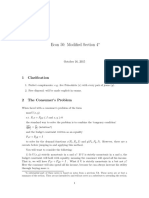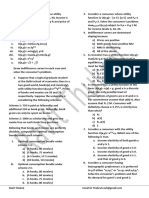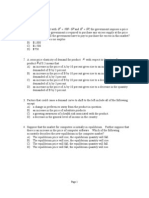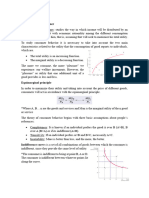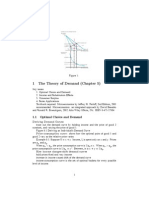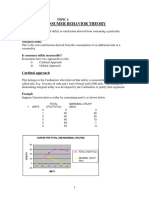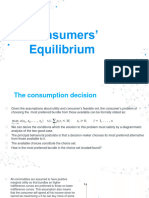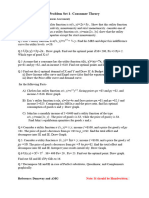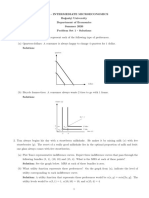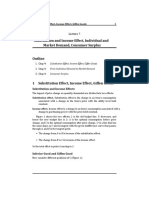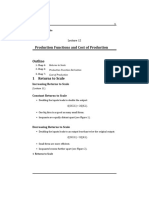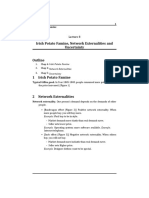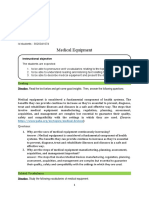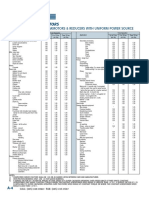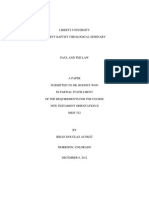0% found this document useful (0 votes)
40 views9 pagesOptimization, Revealed Preference, and Deriving Individual Demand
1. The document discusses corner solutions in consumer optimization problems that occur when the optimal quantity of a good is zero. It provides an example where the consumer's optimal choice is a corner solution with x=0 and y=2.
2. It then discusses revealed preference, using budget constraints and observed consumer choices to determine preferences. It provides an example where two choices contradict each other and are thus not rational.
3. Finally, it derives individual demand curves and Engel curves for goods x and y using a utility function and budget constraint. It characterizes the goods as substitutes and discusses how demand changes with income.
Uploaded by
dijojnayCopyright
© © All Rights Reserved
We take content rights seriously. If you suspect this is your content, claim it here.
Available Formats
Download as DOCX, PDF, TXT or read online on Scribd
0% found this document useful (0 votes)
40 views9 pagesOptimization, Revealed Preference, and Deriving Individual Demand
1. The document discusses corner solutions in consumer optimization problems that occur when the optimal quantity of a good is zero. It provides an example where the consumer's optimal choice is a corner solution with x=0 and y=2.
2. It then discusses revealed preference, using budget constraints and observed consumer choices to determine preferences. It provides an example where two choices contradict each other and are thus not rational.
3. Finally, it derives individual demand curves and Engel curves for goods x and y using a utility function and budget constraint. It characterizes the goods as substitutes and discusses how demand changes with income.
Uploaded by
dijojnayCopyright
© © All Rights Reserved
We take content rights seriously. If you suspect this is your content, claim it here.
Available Formats
Download as DOCX, PDF, TXT or read online on Scribd
/ 9







